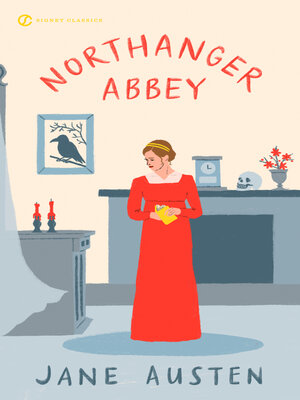
Sign up to save your library
With an OverDrive account, you can save your favorite libraries for at-a-glance information about availability. Find out more about OverDrive accounts.
Find this title in Libby, the library reading app by OverDrive.



Search for a digital library with this title
Title found at these libraries:
| Library Name | Distance |
|---|---|
| Loading... |
Jane Austen's brilliant satire of the gothic novel.
“If adventures will not befall a young lady in her own village, she must seek them abroad.”
The most sprightly and satirical of Austen’s novels, Northanger Abbey was written when the author was herself in her early twenties, and takes for its heroine seventeen-year-old Catherine Morland, a spirited young woman preoccupied with the pleasures of dressing, dancing, and reading sensational novels.
When she visits Northanger Abbey, the ancestral home of handsome Henry Tilney, Catherine’s taste in books comes back to haunt her. The rambling house, full of locked doors, and the family’s mysterious history give rise to delightfully dreadful suspicions, and finally only Catherine’s sweet nature and good humor triumph over her susceptibility.
A sly commentary on the power of literature as well as a cautionary tale about the perils of naïveté, Northanger Abbey is a fresh and funny tale of one young woman receiving, as Margaret Drabble reveals in her illuminating introduction, “intensive instruction in the ways of the world.”
With an Introduction by Margaret Drabble
and an Afterword by Stephanie Laurens
“If adventures will not befall a young lady in her own village, she must seek them abroad.”
The most sprightly and satirical of Austen’s novels, Northanger Abbey was written when the author was herself in her early twenties, and takes for its heroine seventeen-year-old Catherine Morland, a spirited young woman preoccupied with the pleasures of dressing, dancing, and reading sensational novels.
When she visits Northanger Abbey, the ancestral home of handsome Henry Tilney, Catherine’s taste in books comes back to haunt her. The rambling house, full of locked doors, and the family’s mysterious history give rise to delightfully dreadful suspicions, and finally only Catherine’s sweet nature and good humor triumph over her susceptibility.
A sly commentary on the power of literature as well as a cautionary tale about the perils of naïveté, Northanger Abbey is a fresh and funny tale of one young woman receiving, as Margaret Drabble reveals in her illuminating introduction, “intensive instruction in the ways of the world.”
With an Introduction by Margaret Drabble
and an Afterword by Stephanie Laurens







